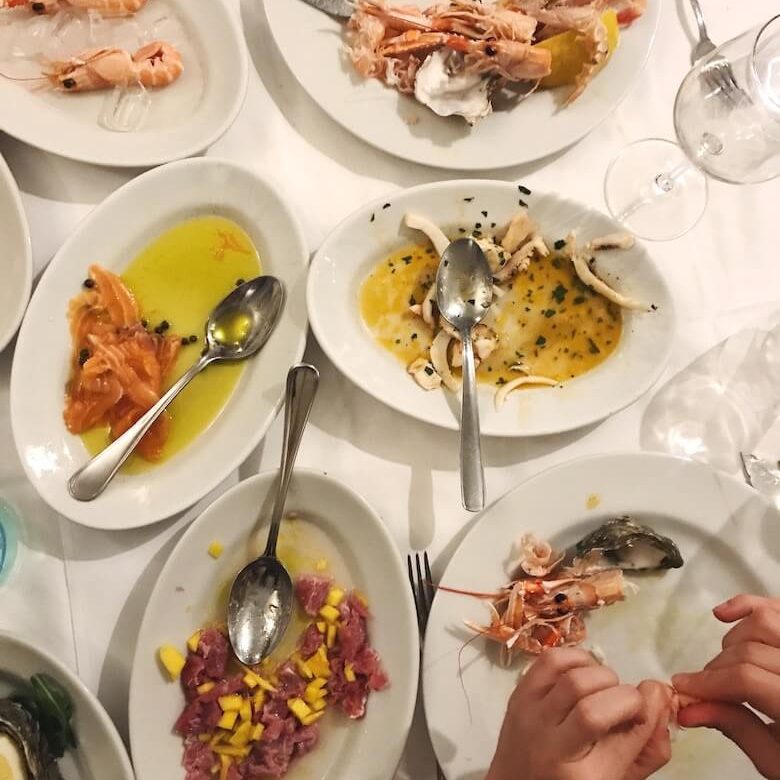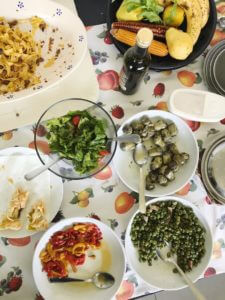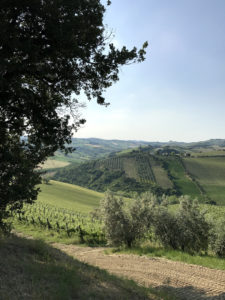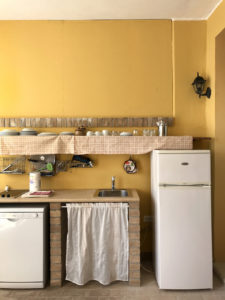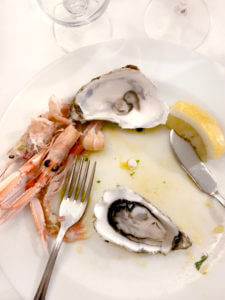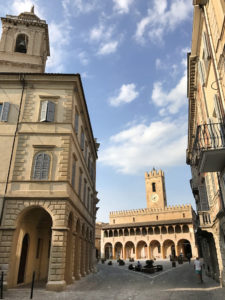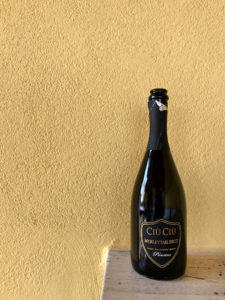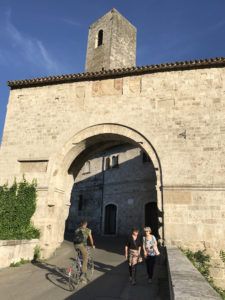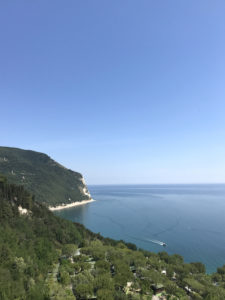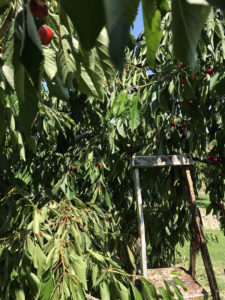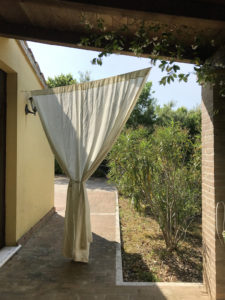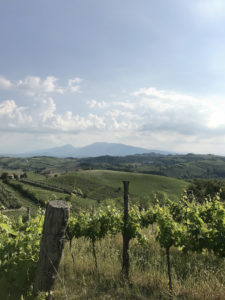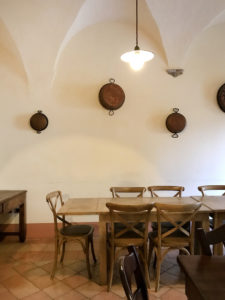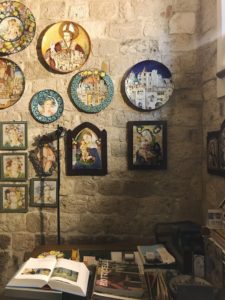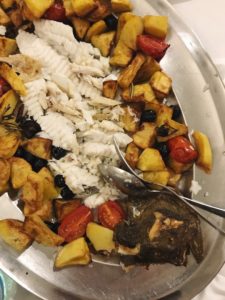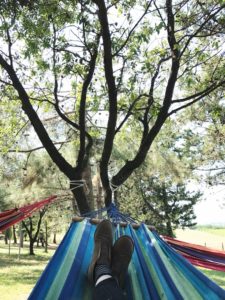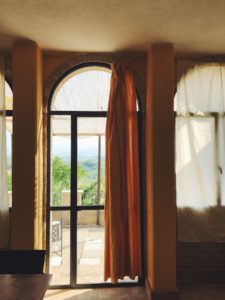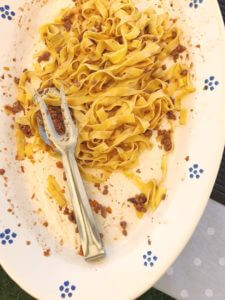
I had no idea what my hosts meant when they said that Italy’s Marche region is like what Tuscany was 30 years ago. I wasn’t alive then and the only time I’ve visited Tuscany was on a hasty high school jaunt through Florence. All I could imagine was a vague cliché mish-mash of that experience, Under the Tuscan Sun, Massimo Bottura’s Chef’s Table episode (not set in Tuscany or Marche) and Elena Ferrante’s Neapolitan quartet (ditto, by definition). Stay with me.
I had been invited to visit Marche—the bulging calf muscle of the Italian boot—by a local organic winery named Ciù Ciù (pronounced like the sound a train makes). My guides were from the area, and taking their agriturismo tour as an Italy novice felt like being let in on a secret: Here’s a breathtaking example of a largely agricultural area that, for now, hasn’t been extensively shaped by international tourism. Granted, these are not the easiest destinations to reach, but what would you expect if you’re trying to ditch the beaten path? With a plane ticket, rental car and some resourcefulness (a little Italian will also go a long way), eating and drinking outside of the popular tourist imagination here is still very possible. You can get your hands dirty, too.
If you follow your appetite when you travel—and that appetite includes meaty pastas and robust wines—then Marche should be on your list. Here’s what I suggest based on my visit: 1. Give yourself a week minimum. 2. Go with a few friends or family to help split the relatively affordable costs. 3. Have a rental car booked before you arrive in Rome. 4. Heal your jet lag before setting your GPS for a three-hour drive northwest along the historic, narrow Via Salaria and through the Central Apennines mountains to the millennia-old city of Ascoli Piceno.
First stop: A city established when Rome was still sheep fields
Ascoli is naturally challenging to reach. I crossed scrubby hills and gorges at the intersection of the Tronto and Castellano rivers to arrive at the fortress-like city center that, as locals boast, was established “when Rome was still sheep fields.” They still rely on over 2,000-year-old white stone infrastructure that Romans built, however, which surprised me since earthquakes here are not uncommon (“It’s like being inside a bouncing bus,” my guide blithely described). Severe tremors are rare, though, and staying in Ascoli allows you to inhabit ancient, labyrinthian architecture. Take a couple days in the province’s capital to explore the mostly pedestrian streets, wander into a ceramics studio (a tradition of the city), pop some olive ascolana (a local breaded and fried olive snack) and sip some Anisetta Meletti, the local anise-flavored liqueur.
Stay: Hotel Palazzo dei Mercanti, Corso Trento E Trieste 35, 63100 Ascoli Piceno
Eat: La Nicchia, Largo dei Cataldi, 9, 63100 Ascoli Piceno
Drink: Caffè Meletti, Piazza del Popolo, 56, 63100 Ascoli Piceno

Second stop: A hilltop vineyard villa with pools
A 45-minute drive east of Ascoli will take you along craggy ridgelines draped in vineyards. Some of these belong to Ciù Ciù, including steep ones that encircle several villas also owned by the winery. If you’ve seen A Bigger Splash (not set in Tuscany or Marche), then you have a very good idea of the scene. If not, picture a one-lane dirt road that ends at a solitary and large goldenrod-colored home overlooking two pools, undoubtedly some ruins and probably a tractor maintaining the vines below. If you go in early May, you’re looking at about $150 to $200 a person for a whole week (that’s the minimum reservation length and there are a range of apartment-size options within each home). Here is both your sanctuary and your port; if you can peel yourself from your lounge chair consider:

Taking your pick of local wineries. You could spend days navigating random serpentine gravel roads along the Piceno cliffs, pulling over at vineyard tasting rooms at will. The indigenous Montepulciano (not to be confused with the similarly named Tuscan wine) and Sangiovese (both rich with red-fruit flavors and aromas) are the dominant red varietals here, as well as Verdicchio (a strong citrusy acidity) and Pecorino (mineral with grassy aromas) for white. I only had time to visit Ciù Ciù’s operation during my stay, which was compact, fine-tuned and around a 10-minute drive from the villa. See their facility up close and try wines there or drive a little further to their tasting room in Offida: a charming ancient hilltop village worth its own day of exploration.

Descending to the Adriatic Sea. You can take your morning cappuccino on the pebble beach in Porto Recanati, or at least that’s what my host and I did while sharing our mutual affection for Jersey Shore (“We all have a little Snooki in us.”). Straightshot, the sea’s about a 30-minute drive from the villa, but we headed north up the coastline another 30 minutes for our beach caffè near the Parco del Conero: a 23-square-mile clifftop nature preserve overlooking the water. Pick a trail and hike through the cypresses, cedars and red juniper before hitting the beach. If you can stave off your dinner appetite (you should), drive halfway home down the coastline to the beachside resort town of San Benedetto del Tronto and dine at Il Gambero da Tato, a decades-old family-owned and -operated seafood restaurant serving some of the best local, seasonal catch.

Taking a cooking class with a local grandma. Except for my food and drink vocabulary (“Oh no, yes, I know what lardo is”), I don’t speak a lick of Italian. That didn’t matter at Casa Agostinelli: the private home of Dilva and Giancarlo Agostinelli. The retired cook and restaurateur couple are fluent in the universal languages of warm hospitality and delicious food, opening their home to small groups for cooking classes, tours of their sprawling organic orto and multi-course meals. My host Paolo (their son and Ciù Ciù export area manager) and I picked cherries before sharing a spread including salumi, homemade tagliatelle with pigeon, fried zucchini flowers, braised artichokes and a chocolate liqueur–based custard. Stuffed and buzzing from generous Ciù Ciù pours (their sparking Pecorino Merlettaie Brut to start and the Rosso Piceno Superiore D.O.P. Gotico to complement the tagliatelle), we sprawled out on hammocks strung between small pines in a shaded corner of the garden. Is this what Tuscany was like 30 years ago? I still can’t say, but I do know that I easily slipped into a riposo while watching the sea.
Featured photo courtesy of Ciù Ciù.


